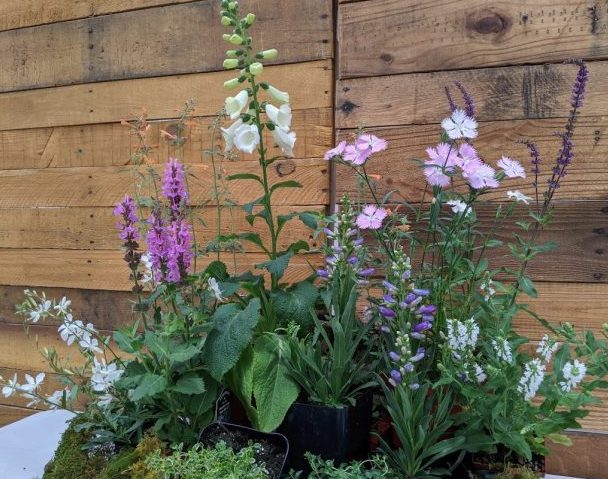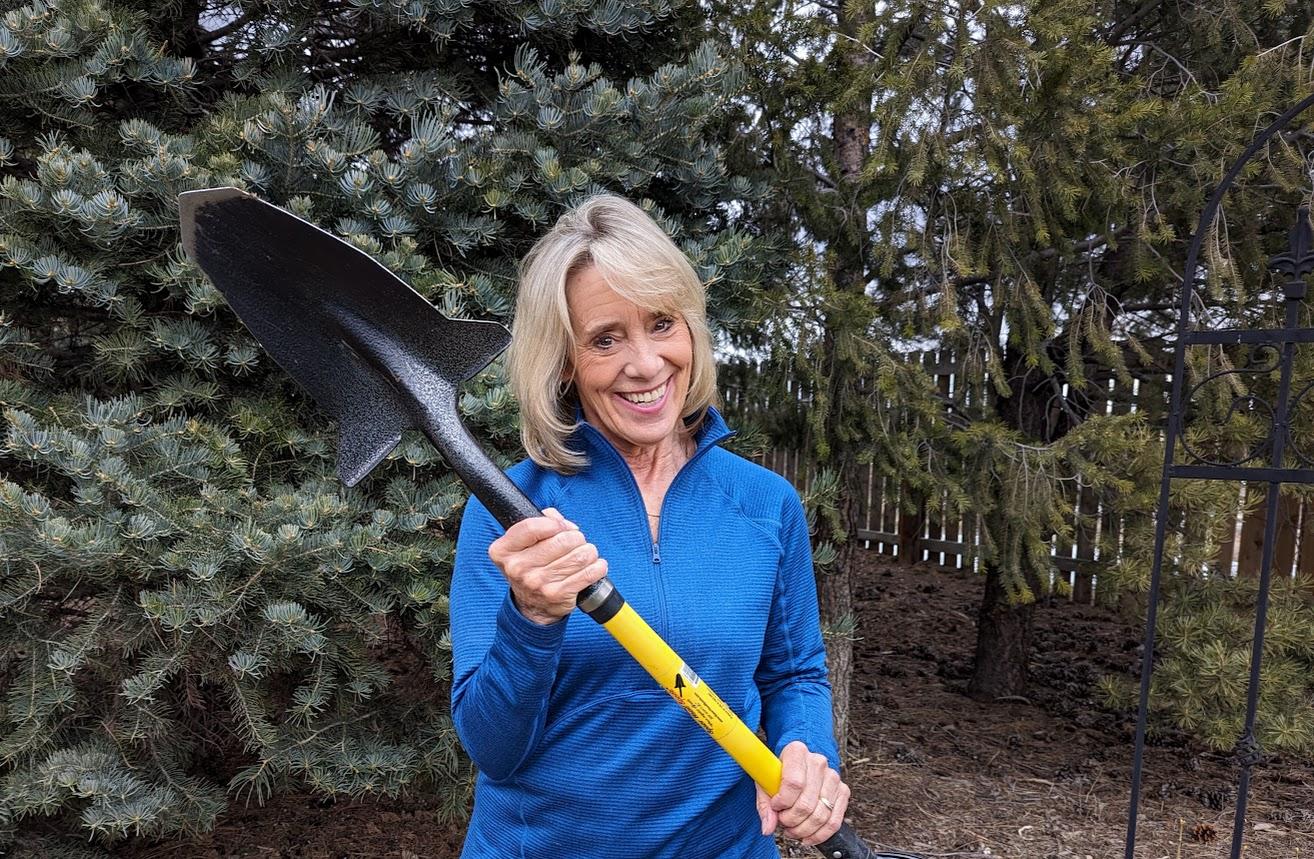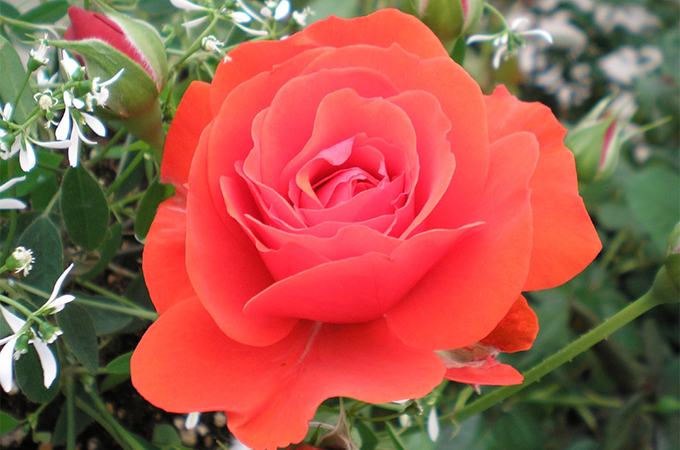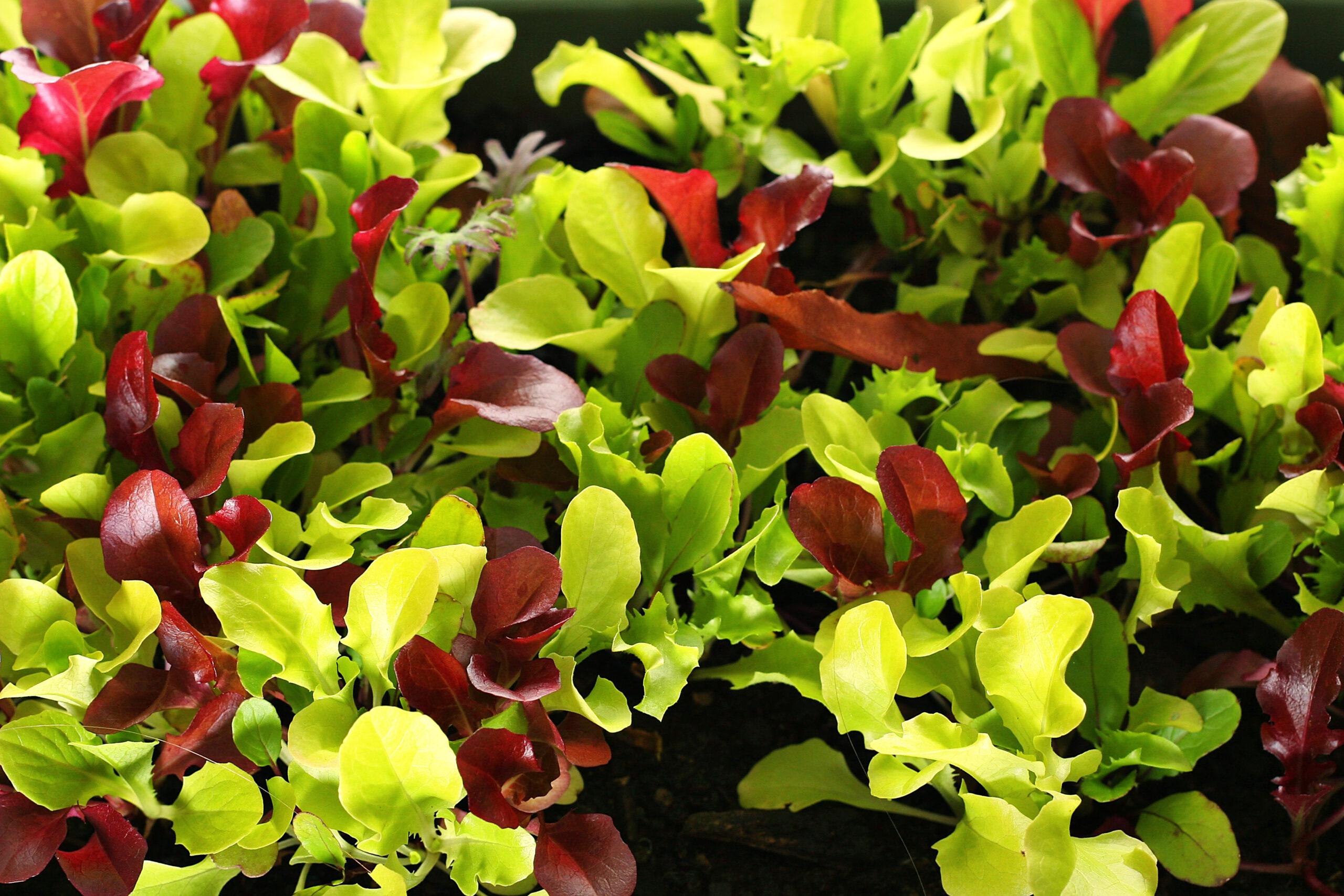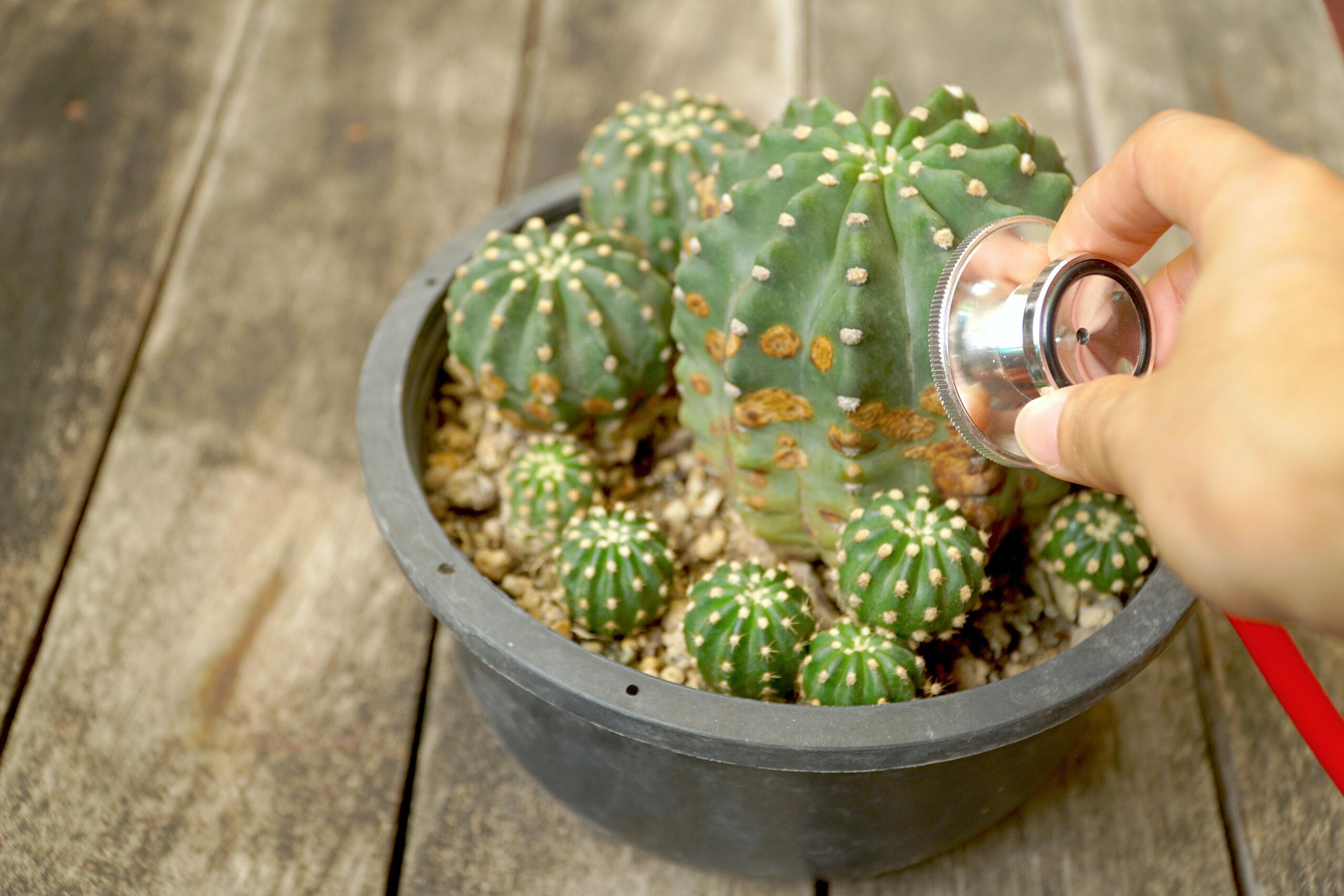Would you believe that the dozen or so plants pictured above are all in pots no bigger than four inches across, and maybe a bit smaller? And at Tagawa’s, none of them costs more than $10?
Tagawa’s has always carried certain varieties of perennials in smaller pots, but with a recent shipment, that inventory has gone up even more! Lots of these smaller-potted perennials are now scattered throughout our Perennials Department, along with other plants that are available much of the time.
Our new team of Tagawa Garden Coaches loves these plants. I wanted to know why perennials in small pots appealed to them so much, so I found out! I think you’ll find their answers quite interesting. It’s information that could easily apply to your own perennial gardens
But first … who are the Tagawa Garden Coaches?
These three amazing ladies include Lina, Linda, and Debra Ann. You may have run across any or all of them on your visits to our Perennials Department. During just the short time their Garden Coaching service has been up and running, they’ve met in person for hour-long appointments with dozens of our guests. (Fee details and online sign-up at tagawagardens.com)
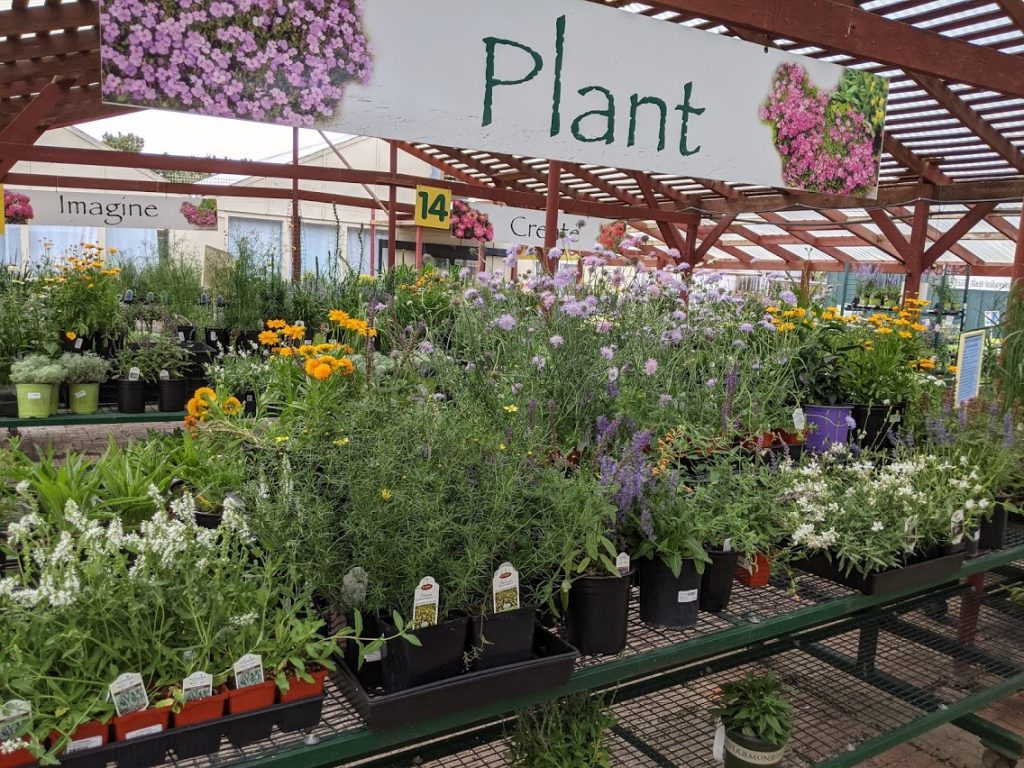
With so many beautiful plants to choose from in Tagawa’s Perennials Department, why do these veteran garden designers so often choose smaller-potted perennials when they’re planning gardens for themselves or others? I spoke with them individually, and their answers are much the same.
Lina summed it up perfectly: Choosing from among these plants (marked $10 and under, remember) is simply “more bang for your buck!” Debra Ann loves them because she can buy five or even seven smaller perennials instead of three large ones and create a “drift,” a natural-looking wave of flowers. And since these smaller root balls can easily go into smaller holes, planting them is easy! Most gardeners would love to be able to dig less and plant more!
Linda says space in her garden is tight, so adding a small-potted perennial makes more sense than trying to add a plant with a much larger root system.
And Lina spoke for all of them when she said one of the best reasons to consider perennials in small pots is because these smaller plants adapt so quickly and usually don’t show any signs of transplant shock that can affect larger-potted plants. She says within a couple of seasons, the smaller plants often catch up with the larger ones.
Let’s take a look at some of the small-potted plants our three Tagawa Coaches are especially drawn to.
First up: Debra Ann
Aside from being my wonderful OutReach buddy, Gardening Coach Debra Ann (D.A. to her friends) is passionate about perennials.

She’s now in the middle of creating brand new gardens in her own yard, and small-potted perennials are playing a big role. Here are just a few of D.A.’s favorites.
“First Love” dianthus
D.A.’s admiration for First Love dianthus begins with a bit of magic this sweet plant delivers. Its flowers emerge white, transform to a soft pink and then settle into a deep rich rose. Like having three plants in one!

For reference, this picture shows three small-potted plants tucked together. But each of these plants will mature to a beautiful clump 15″ high and wide within a couple of growing seasons.
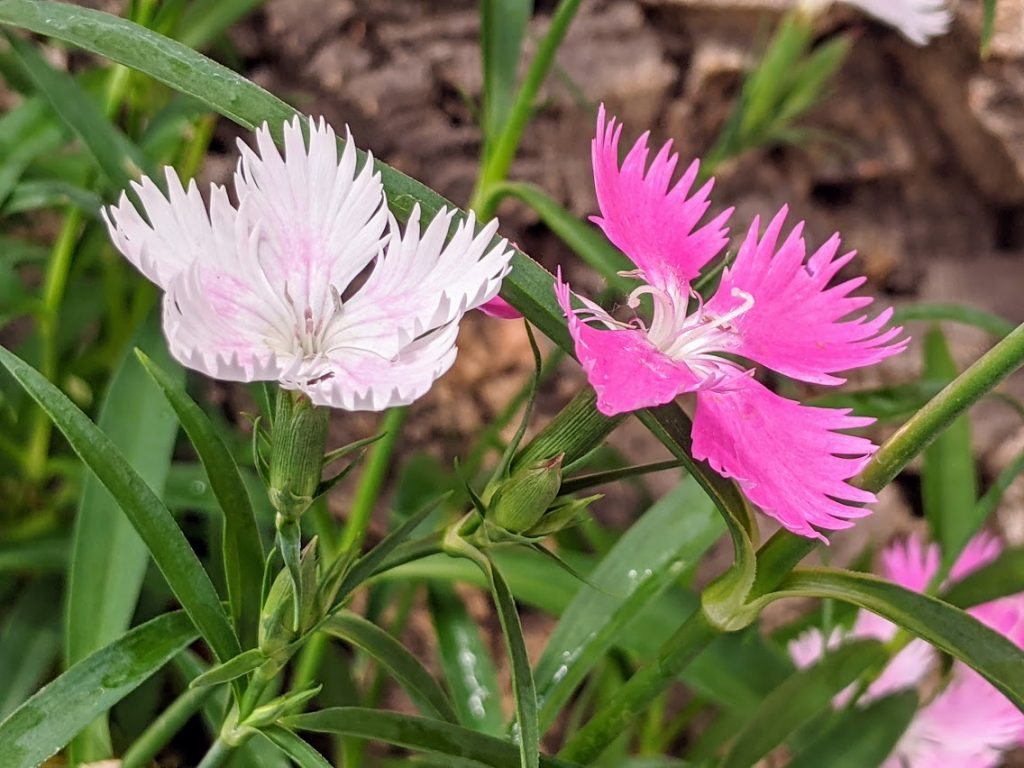
D.A. also likes First Love because it forms a beautiful tidy clump of foliage, the slender stems move with the wind, and with steady deadheading, the flowers keep coming from spring to fall. We can’t ignore the amazing aroma… a sweet clove-like perfume that “wafts” (her word) with the breeze and makes her smile!
“Riding Hood Blue” penstemon
A lot of us can’t get enough blue in our gardens, and D.A. is definitely no exception. These blossoms are just a couple of days from opening when the flowers will show striking colors of purple and neon blue mixed with soft white. 
D.A. says she loves the architecture of this plant’s upright form. With consistent dead-heading (removing the flowers as they begin to fade), Riding Hood Blue will keep sending out blossoms from mid-summer to fall.
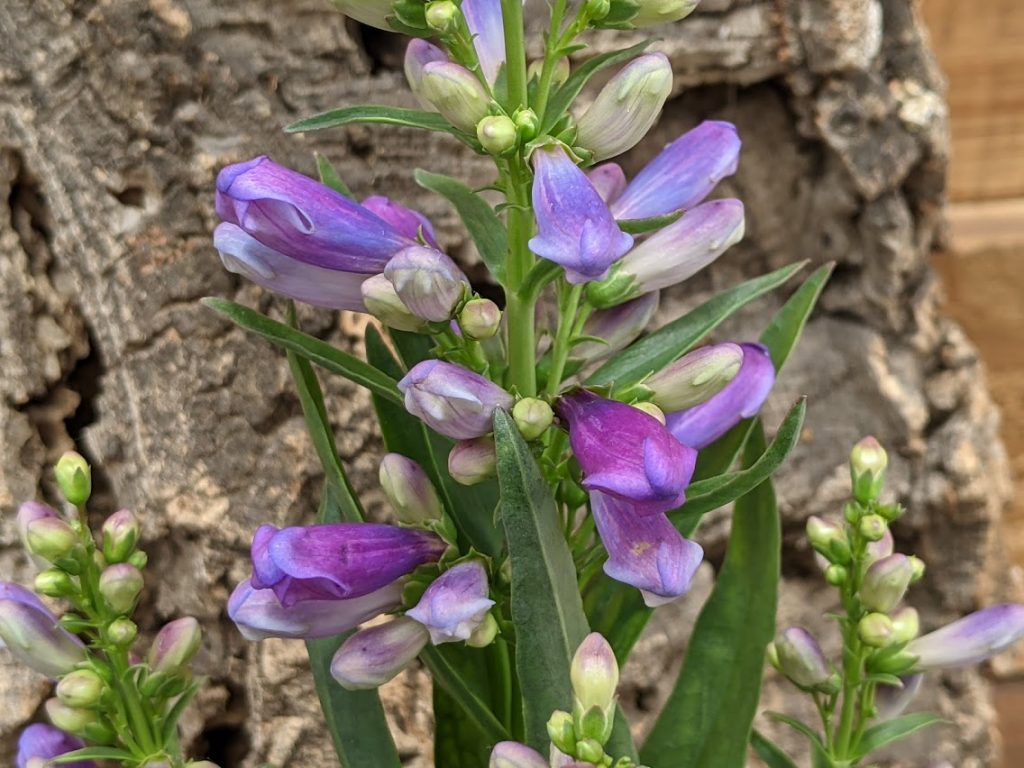
Like most penstemons, Riding Hood Blue is especially popular with hummingbirds. Note: It seems this plant may come in with somewhat different colors when we first receive it from the growers. Please don’t hesitate to ask the folks in our Perennials Department if there’s any confusion.
“Caradonna” meadow sage
Debra Ann has been praising this distinctive perennial to me for days! It really gets her garden design juices going!

Each of the three small plants shown here will grow to at least 24″ tall within a couple of seasons but will stay quite narrow at just 15″ wide. D.A. loves Caradonna’s stately dark purple and black stems. She says the stems are so slender, you can see through them to contrasting flowers and foliage behind, creating beautiful layers of color and texture.

Caradonna makes a stunning display planted next to or in front of sharply contrasting colors. D.A. says the best blue tones will come when Caradonna is grown in full sun.
Our next coach is Linda
To quote Linda, small-potted perennials “take off like gangbusters,” and what gardener doesn’t want that?

With so many perennials in small pots to choose from, what does Linda put in her garden?
“Fairy Snow” balloon flower
Linda says this flower draws her in with its big, snow-white blossoms. And she loves that Fairy Snow almost seems to glow at night with just a bit of nearby light. Sounds like the makings of a “moon garden,” doesn’t it?
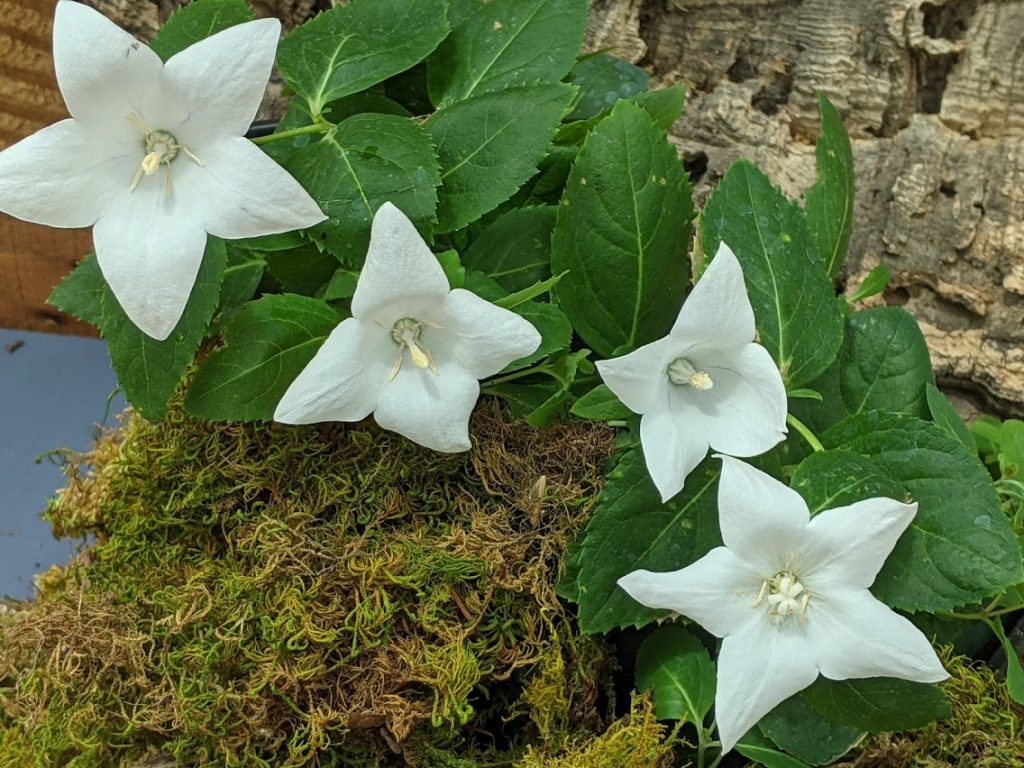
Linda smiles just looking at these big, unique flowers, with buds that actually look like inflated balloons just before they open. As the flowers mature, a thin blue vein will appear in each petal, leading to the white center. Lovely!
She says the blossoms rarely need dead-heading and flourish from mid-to late summer. Linda says her own Fairy Snow balloon flowers do best in shade, though growers say it will tolerate sun.
“Windwalker Desert Rose” salvia
Linda calls the color of Desert Rose salvia a “clear, clean pink.” Nothing wishy-washy about these flowers!

Windwalker Desert Rose will produce an abundance of these bold little flowers, held high on thin two- to three-foot leafy spikes. In her own garden, she plants them in and amongst her roses.

Hummingbirds and many types of bees are drawn to both the color and the tubular shape of the blossoms. Linda says Desert Rose can bloom all summer with help from a little deadheading. Being in the sage or salvia family, it is also deer and rabbit resistant.
Bell Flower, a.k.a. campanula
Linda says she is naturally drawn to combinations of blues and purples mixed with white, and these pretty bell flowers deliver in full!

Linda plants several of these small-potted perennials in full sun. Their compact 10″ x 12″ mature size makes them perfect for growing toward the front of a bed where they can create a big impact, especially if using small-potted plants allows for a larger display.
And then there’s Lina, of course…
Lina is Tagawa’s resident “Aussie” and has been advising Tagawa guests for umpteen years or more. That’s a long time!

Lina loves planting for pollinators, and small-potted perennials offer a lot of choices.
“Buzz Sky Blue” and “Buzz Velvet” butterfly bush, a.k.a. buddleia
Aside from being beautiful plants, Buzz Sky Blue and Buzz Velvet do a great job of bringing in the pollinators, especially butterflies, as their name implies.

Lina says that when these small-potted perennials mature, they’ll “bloom and bloom” all season long if the old seed pods are removed consistently. She loves the arching stems and the lovely fragrance of butterfly bush… the same fragrance that draws in the bees, no doubt!
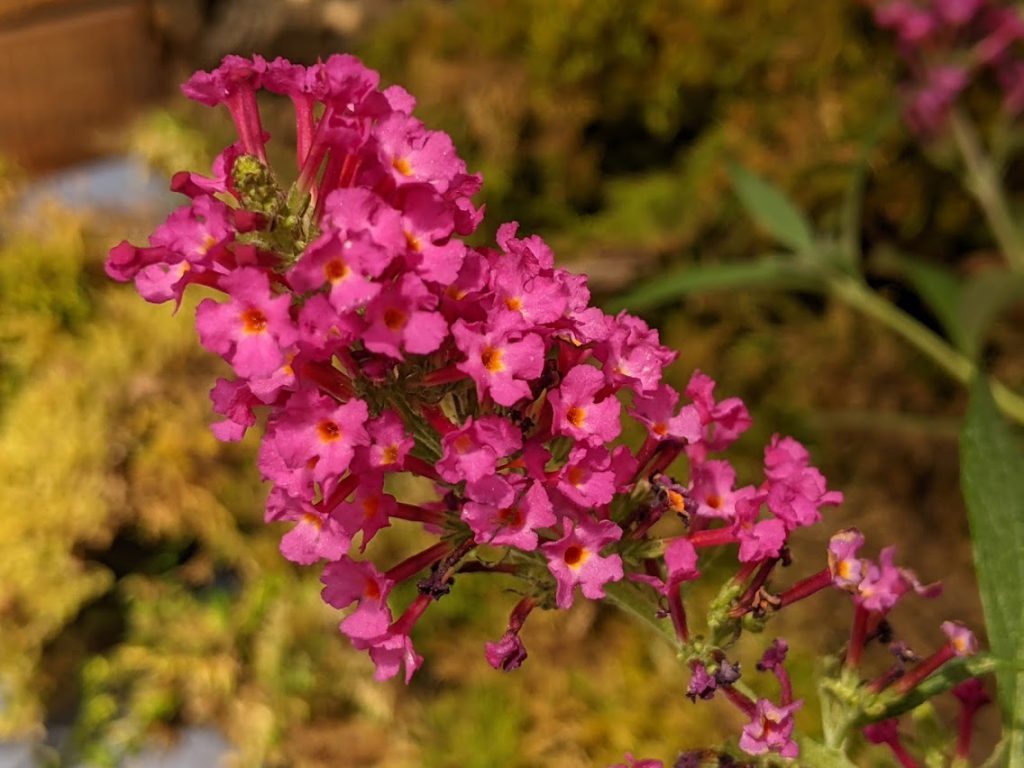
The tubular flowers of butterfly bush also attract hummingbirds.
Butterfly bushes always make great landscape plants. Being able to buy them in small pots is a bonus!
“Whirling Butterflies,” a.k.a. gaura
It’s safe to say that Tagawa’s Garden Coaches are drawn to plants that move. No wonder Lina loves gaura, also known as “Whirling Butterflies.”

The butterfly-like flowers at the ends of these long arching stems begin to dance with just a hint of a breeze. It brings a lovely touch to any garden.
Lina says despite their light and airy appearance, these plants are tough and resilient. She takes advantage of their see-through appearance by planting them with contrasting flowers and foliage nearby.

With basic good care, whirling butterflies will bloom June through the first frost.
“Smoky Hills” skullcap
This is a lovely plant with an odd name, but for folks like our Garden Coaches who value some beautiful blue in a small package, Smoky Hills is an excellent choice, especially for hot, dry locations.

Lina says this perennial is a real eye-catcher in the garden even though it grows to be just 12″ tall and wide. The tiny lavender-blue flowers are accented with two bright white stripes and are set against lots of small roundish leaves that balance out the blossoms perfectly.
In Lina’s garden, Smoky Hills reseeds “gently,” creating lots of free plants if she likes where they pop up. She highly recommends them for rock gardens and low-water landscapes once they’re “established,” meaning after two seasons of regular watering.
A reminder…
Tagawa’s inventory is changing all the time. Not all of the plants featured here will necessarily be in stock all the time. f there’s a specific small-potted perennial that you’re looking for, please feel free to call ahead and ask if it’s currently in stock.
